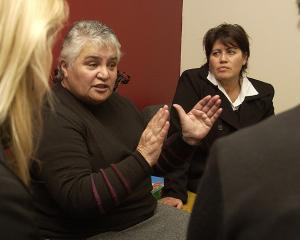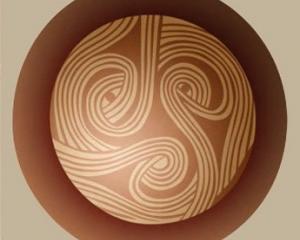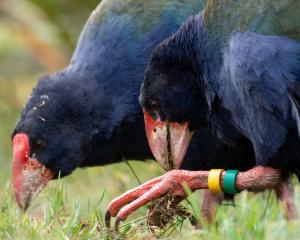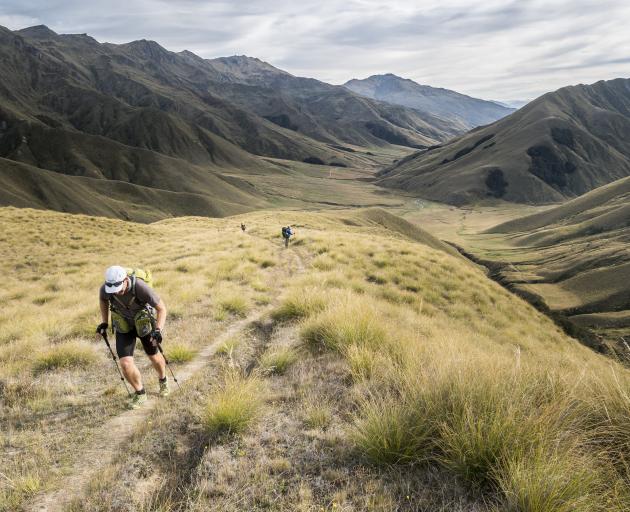
Scott K. MacLeod spends three days shivering and hobbling his way along the Motatapu Track.
On Shania Twain's ridgeline, the wind slices through our clothes and chills us deep.
It's mid-morning and we're climbing from Fern Burn Hut alongside marker poles towards Jack Halls Saddle. The sky is clear, but we're in the shadows of the surrounding mountains and the wind is whipping up the valleys towards us.
We're tramping as fast as we can towards the sunlit peak above, but as our altitude passes 1200m our hands grow so numb we can barely feel our trekking poles.
When we reach the warmth, I squint at the sun and thank Shania Twain.
Why Shania?
Because if it weren't for the Canadian pop star, we wouldn't be here.
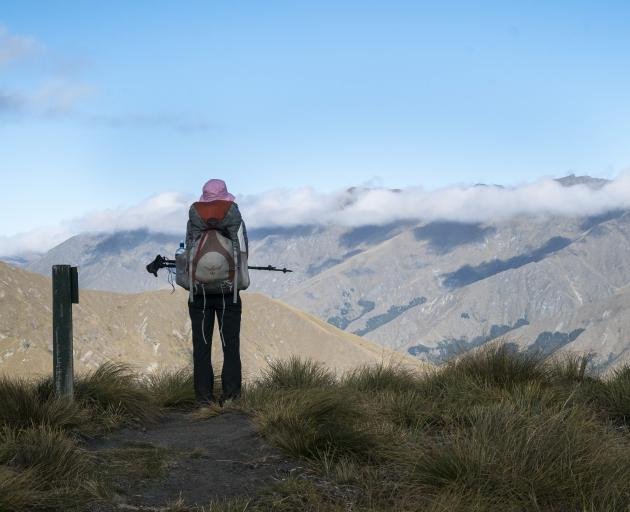
Jo and I are tramping from Wanaka to Arrowtown through the back country, and part of our route includes the 34km Motatapu Alpine Track.
This runs through land that Twain and her then husband, Mutt Lange, bought in 2004. As part of the deal, they paid six-figure sums to build three Department of Conservation huts and a public-access trail across their property.
Jo scoots ahead on knees that are less worn out than mine. Hell, most of her body is less worn out than mine. We're both aged in our 40s, but we're tramping this route towards the end of a punishing five-month hike of the 3000km Te Araroa Trail. I've wrecked myself more than she has, shedding 24kg in body weight and gaining a dozen or so injuries.
I stop to soak in the awesome alpine vista and notice that another hiker is gaining on me fast. I know that I'm too wasted to outpace him. Rather than submit to the ignominy of being overtaken, I slump down on to my backpack and pretend to take a break.
He soon catches me.
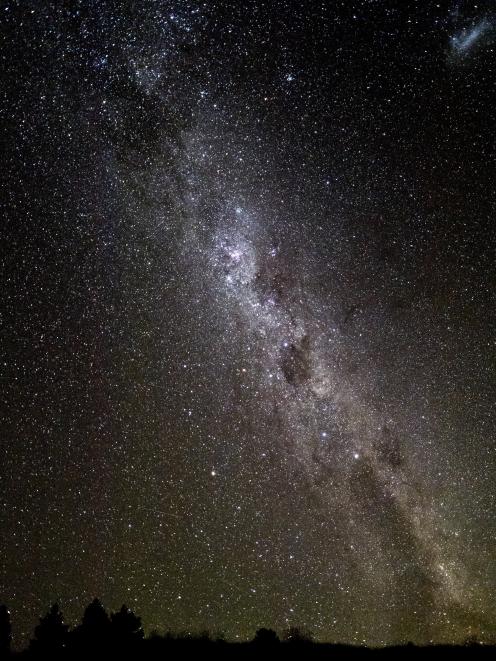
Christchurch athlete Dennis is sporting a minimalist pack ("Anything that doesn't keep you alive you don't need'') and is slick with sweat. He squats down for a chat but doesn't stay long.
"The in-laws wait for me at trail-heads,'' he says, jumping up.
"They're my support crew. They're Australian, and loving it.''
In no time he is gone, skipping along the trail.
I pick up the pack and carry on.
The trail is little more than a goat track and some sections are steep enough to be dangerous.
In December 2014, 68-year-old Wanaka tramper Maureen Schofield fell to her death not far from here. Afterwards, a Doc spokesman warned that the trail was "steep and challenging'' with "a certain amount of risk''.
Doc's official track notes state that the Motatapu is a "demanding'' three- to four-day journey for "experienced trampers''.
I catch up with Jo, who has condescended to wait for me. Together we meander over lightly tussocked hills with stunning views along the surrounding valleys. Eventually a sharp descent leads us across a river clothed in a patch of bush. Then we begin our second big ascent of the day, plodding up a narrow track beside a farm fence. The land is almost bare save for low tussock and windswept grass, and Jo soon pulls ahead again.
I hear him before I see him.
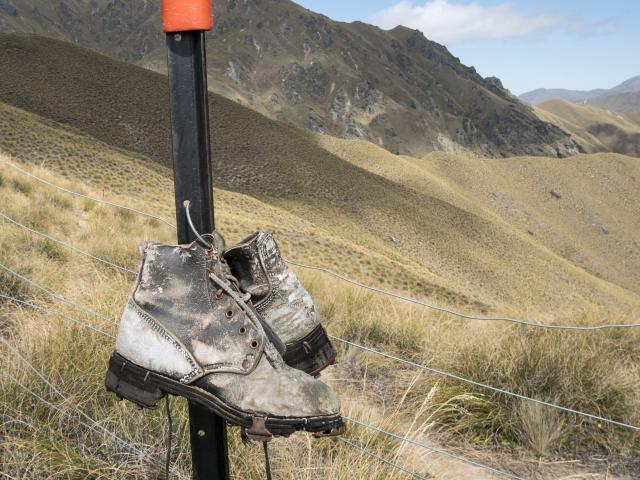
A ragged kaftan crests a hill and wafts towards me. Its occupant is chanting to the accompaniment of jangling bells of the type that I'd last heard in northern India in 2006, while living with a group of Tibetan refugees.
"Namaste,'' I say, pressing my hands together in the Buddhist greeting.
"Namaste,'' says he.
My new friend is chalk-white, bald and possessed of a constant shiver, apparently the result of a nervous condition. His kaftan is striped like cliched prisoners' garb and he is dangling two small bells in front of him. This is unusual tramping attire, but he is equipped with a backpack of sorts.
I ask him if he is Buddhist, and he smiles.
"I've studied Buddhism, Christianity, Islam and Hinduism,'' he says. "It's all about love.''
"You going to the next hut?''
"Yes,'' he says, looking around. "But this trail is tough. It's taken me four hours to get here from the last hut.''
It's already mid-afternoon. Mental arithmetic tells me that he's not going to make it.
"Do you have a tent?'' I ask.
"No, but I've got two pieces of tarpaulin. A couple of nights ago I wrapped myself up in those and slept in the tussock.''
"OK,'' I say. "The weather forecast is good. Happy trails.''
We part ways.
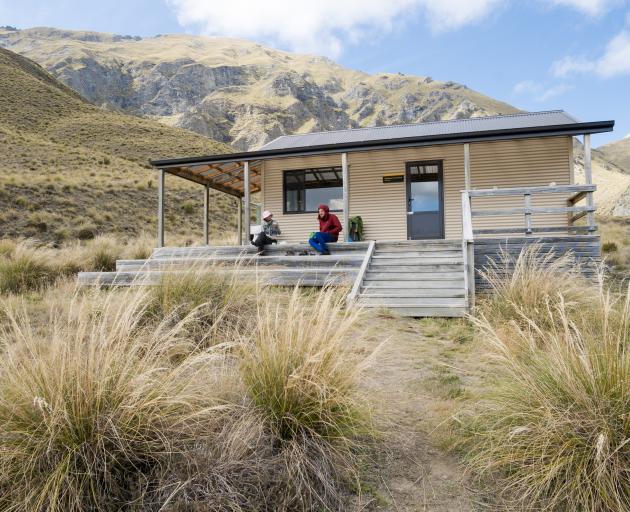
A good hundred metres later I hear the chanting and bells resume behind me. Then I cross a saddle and descend along rolling ridgeline. I pass some gates and fences. They are in much better condition than most other high-country fences I've seen. Shania keeps a good fence, I decide.
Actually, Shania no longer keeps these fences. After putting her "heart, soul and dreams'' (her words) into her 24,700ha New Zealand home - not to mention at least $21.4 million - she and her husband swapped partners with another couple and divorced in 2008. Since then, Twain has lost her stake in the land.
I prefer to ignore this chronology. As far as I'm concerned, I'm walking across Shania Twain's backyard.
I'm also walking to the beat of music, albeit not that of Shania Twain. The bass-like thump of my footsteps makes all kinds of songs pop into my head. At a certain pace it's the Bee Gees' Stayin' Alive, a song I publicly profess to loathe but secretly quite like. Other times it's something by Billy Joel. Today it's David Bowie's Heroes.
I've almost reached the bottom of a hill when I stumble and fall, plunging head-first into a strip of cold mud. Pain zaps my left knee, the knee with the torn medial collateral ligament that has been tormenting me for weeks.
"Dammit!''
Can I go on? I bloody well have to. Jo is long gone. I stand up and grit my teeth as my kneecap shifts around in unnatural fashion. And then I see it. Salvation!
I search my mental dictionary for the right adjective to describe the feeling a tramper gets when he first spots a hut after a long day. There is none, so I decide to invent one.
"Hut-happy'' is one possibility. "Hutstoked'' is another.
I decide that I am hutjoyed.
It's a sturdy, cream-coloured 12-bunker with the usual long-drop toilet out back. Its name is Roses Hut.
I hobble towards the hut, coaxing my knee. When I reach it I am reunited with Jo. We boil pasta. We talk about our day. Other trampers arrive. The sun goes down and we retire to our bunks to sleep.
That night I awake in the early hours, stirred by the call of nature. It is very dark and I can't find my jandals, so I venture on to the balcony barefoot. A black shape jumps on to the railing in front of me. A possum! It refuses to budge when I try to scare it away, so I grab a nearby trekking pole and brace myself for combat. The possum vanishes and I hear it scampering over wooden boards.
I walk down the steps and into the tussock, lower the front of my long johns and stare up into the sky as I relieve myself. There's no moon and no clouds, and the sky is ablaze with stars. This is the second-best night sky I've seen on a long-distance tramp, beaten only by a stunner on Ninety Mile Beach.
I creep back into the hut and slip under my quilt, moving quietly so as to avoid waking Jo and the six other trampers.
I turn my head towards the starlit window. I feel content, weary and very slightly sheepish.
After all, I've just peed on Shania Twain's lawn.
Scott K. MacLeod is a senior reporter at the Bay of Plenty Times.

